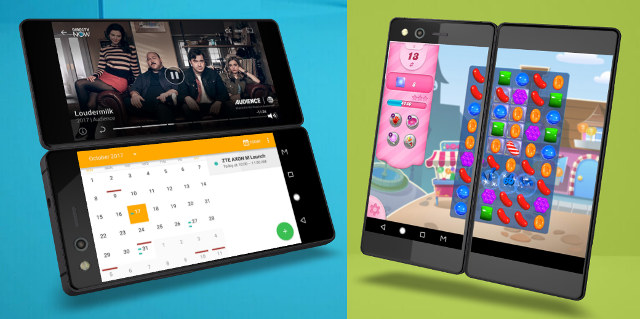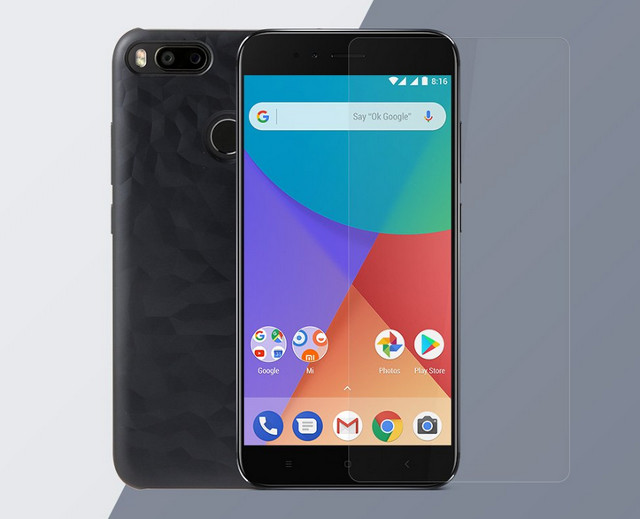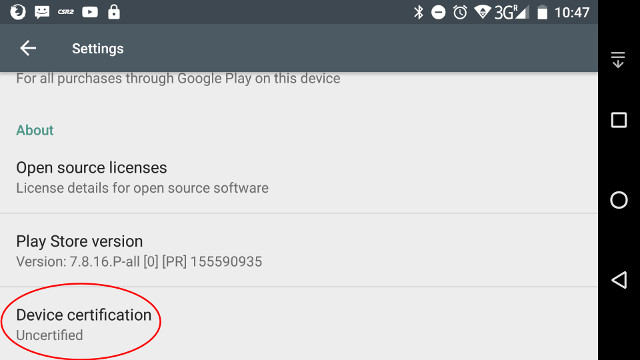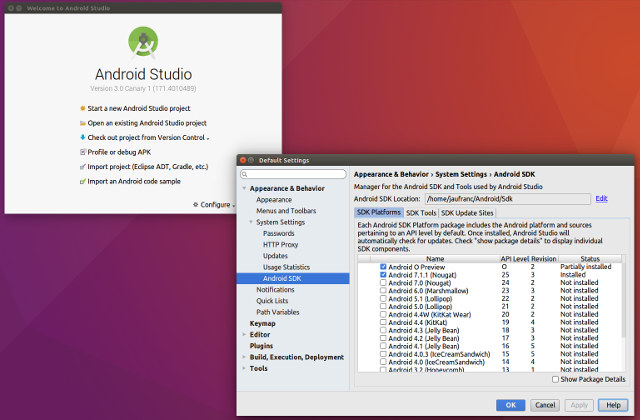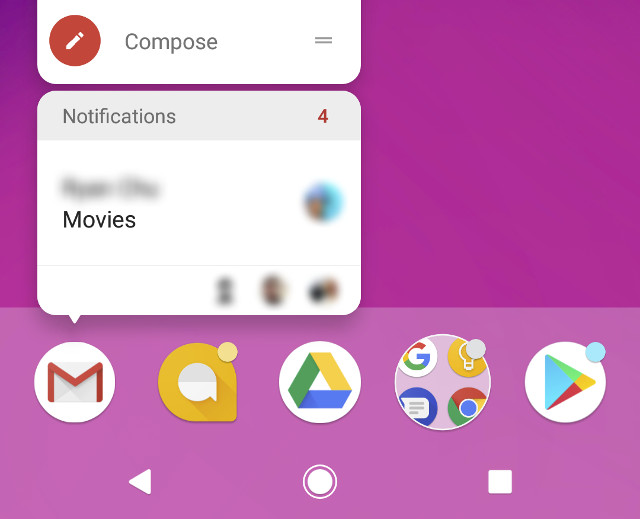We’ve seen smartphone in the past with two displays, such has Yotaphone 2 with a color front display, coupled with an e-Paper rear display that’s always on and consumes less power. ZTE Axon M also comes with two displays, but it’s a completely different beast, as both are color displays, and foldable to create an extended display when needed, somewhat like a foldable tablet. ZTE Axon M (partial) specifications: SoC – Qualcomm Snapdragon 821 quad core processor up to 2.15 GHz with Adreno 530 GPU System Memory – 4GB RAM Storage – 64GB eMMC 5.1 flash + micro SD slot up to 256 GB Display – 2x 5.2″ @ 1920×1080 displays making a single 1920×2160 screen when opened Audio – 3.5mm audio jack, microphone, dual speaker, Dolby Atmos support, AKM 4962 HiFi chipset Camera 20MP rear camera with f/1.8 aperture, PDAF, dual-image stabilization, dual LED flash Up to 4K @ […]
Google Introduces Pixel 2 and Pixel 2 XL Smartphones running Android 8.0 on Snapdragon 835 SoC
When Google introduced Nexus brand, it aimed to provide affordable yet decently spec’d Android smartphone. The Nexus has now been deprecated, Google left the low/mid range market, leaving other fills the void, and instead launch the Pixel brand for premium devices. The company announced several new hardware devices yesterday, including two new Pixel smartphones: Pixel 2 and Pixel 2 XL, both powered by a Qualcomm Snapdragon 835 processor, and running the latest Android 8.0 Oreo. Both phones share most of the same specifications: SoC – Qualcomm Snapdragon 835 with 4x Kryo 280 “performance” cores @ 2.35GHz, 4x Kryo 280 “efficiency” cores @ 1.90GHz, Adreno 540 GPU, security module System Memory – 4GB LPDDR4x Storage – 64GB or 128GB flash Display Pixel 2 – 5.0″ always-on AMOLED display with 1920×1080 resolution (16:9 aspect ratio); 2.5D Corning Gorilla Glass 5 Pixel 2 XL – 6.0″ always-on pOLED display with 2880×1440 resolution (18:9 […]
Xiaomi Mi A1 Android One Smartphone Launched in India, Coming to 40 Markets Soon
Android One initiative aims to deliver low cost smartphones with at least 2-year worth of firmware updates. The program first launched in India in 2014, has since then expanded into more countries, and Xiaomi has just introduced their own Android One phone with Mi A1. Xiaomi Mi A1 specifications: SoC – Qualcomm Snapdragon 625 octa-core processor up to 2.0 GHz with Adreno 506 GPU @ up to 650MHz; 14nm FinFET process System Memory – 4GB RAM Storage – 64GB internal storage, micro SD slot up to 128GB Display – 5.5″ LTPS FHD display with 450nit brightness Camera 12 MP + 12 MP dual rear camera with dual tone flash, autofocus, 2x optical zoom 5 MP front-facing camera 4K/1080p/720p video @ 30 fps; 720p slow-mo video @ 120 fps Connectivity Dual band 802.11a/b/g/n/ac WiFi with WiFi direct and WiFi display support Bluetooth 4.2 Cellular 4G modem; supports Volte/4G/3G/2G on compatible networks […]
Android 8.0 Oreo Launched, OS Images, and AOSP Source Code Released
Google has now formally announced Android O version and name: Android 8.0 Oreo. We already had seen the new Features in Android O-reo during the first preview release with picture-in-picture support, autofill APIs, adaptive icons and so on. There’s also a new Android Oreo character… If you want to run the latest Android 8.0 on your device, you can do so on Nexus 5X, Nexus 6P, Nexus Player, Pixel C, Pixel, and Pixel XL by getting the firmware in the download page, unless you are enrolled in Android Beta Program in which case you should receive it automatically. What I did not see (yet) is a joint announcement for a new Android 8.0 phone like last year LG V20 smartphone with Android 7.0, and Google simply said that “by the end of this year, hardware makers including Essential, General Mobile, HMD Global Home of Nokia Phones, Huawei, HTC, Kyocera, LG, […]
Android Play Store Tidbits – Blocking Unlocked/Uncertified/Rooted Devices, Graphics Drivers as an App
There’s been at least two or three notable stories about the Play Store this week. It started with Netflix not installing from the Google Play Store anymore on rooted device, with unclocked bootloader, or uncertified devices, and showing as “incompatible”. AndroidPolice contacted Netflix which answered: With our latest 5.0 release, we now fully rely on the Widevine DRM provided by Google; therefore, many devices that are not Google-certified or have been altered will no longer work with our latest app and those users will no longer see the Netflix app in the Play Store. So that means you need to Google Widevine DRM in your device, which mean many Android TV boxes may stop to work with Netflix. You can check whether you device is certified by opening Google Play and click on settings, Scroll to the bottom and check Device Certification to see if it is Certified or Uncertified […]
Android Studio 3.0 Preview Release with Support for Kotlin Programming Language, Android O Preview Images
Most Android apps used to be programmed in Java with the Eclipse IDE, then Google introduced Android Studio in 2013 which has now replaced the latter, and with the release of Android Studio 3.0 Canary 1 preview, the company is now offering developers to program apps using Kotlin language instead of Java. Kotlin programming language is 100% compatible with Java language, and you can even mix Kotlin and Java in your code. Kotlin can make your code much more simple while declaring classes, and it has a few other improvements over Java. Android Studio also include a Java to Kotlin converter. The language has already been used by Expedia, Flipboard, Pinterest, Square, and others. Android Studio 3.0 also brings many other improvement, such as performance profiling tools for the CPU, memory, and networks showing your app performance in real-time, and faster Gradle builds for large sized app projects. Android Studio […]
Google Releases Android O Developer Preview 2, Announces Android Go for Low-End Devices, TensorFlow Lite
After the first Android O developer preview released in March, Google has just released the second developer preview during Google I/O 2017, which on top of features like PiP (picture-in-picture), notifications channels, autofill, and others found in the first preview, adds notifications dots, a new Android TV home screen, smart text selection, and soon TensorFlow Lite. Google also introduced Android Go project optimized for devices with 512 to 1GB RAM. Notifications dots (aka Notification Badges) are small dots that show on the top right of app icons – in supported launchers – in case a notification is available. You can then long press the icon to check out the notifications for the app, and dismiss or act on notifications. The feature can be disabled in the settings. Android TV “O” also gets a new launcher that allegedly “makes it easy to find, preview, and watch content provided by apps”. The […]
Google Releases Android O Developer Preview with UI & Audio Improvements, Better Performance, etc…
Nearly exactly one year after Android N developer preview release, Google has now announced the release of Android O developer preview in order to get feedback from the developer community before the official release of Android 8.0? Oreo? in Q3 2017. So what’s new so far in Android O? Here are some of the changes: Background activity limits – Automatic limits on what apps can do in the background for implicit broadcasts, background services, and location updates. Notification channels – New app-defined categories for notification content for better control from the use, as user may only block or change the behavior from one channel, instead of applying the same behavior to all notifications from a given app. For example, a News app may have notifications for Technology, Sports, Politics, International, etc… Autofill APIs – Platform support for autofill, where users can select an autofill app, similar to the way they […]


